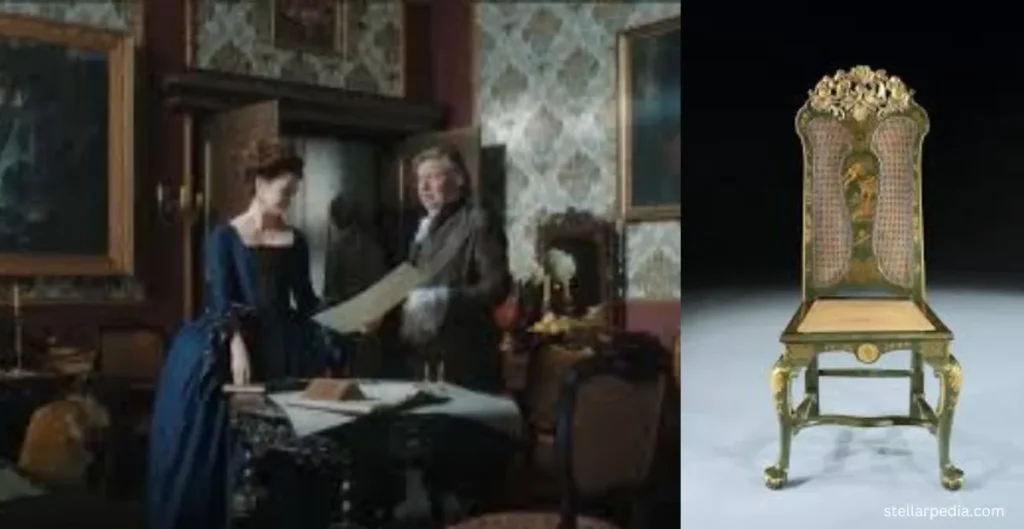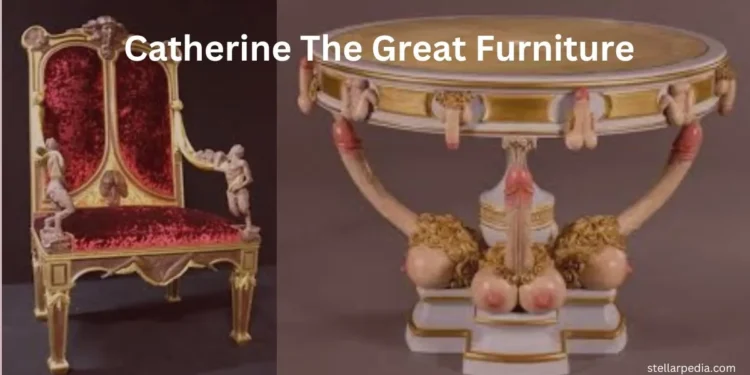Catherine II of Russia, commonly known as Catherine the Great, was a formidable ruler whose reign from 1762 to 1796 marked a golden era in Russian history. Known for her expansive political ambitions, enlightened reforms, and patronage of the arts, Catherine’s influence extended beyond politics and into various cultural domains, including catherine the great furniture design. Her taste and preferences helped shape a distinct style that combined European elegance with Russian grandeur, leaving an indelible mark on the world of interior decor.
The Rise of Catherine the Great Furniture
Born as Sophie Friederike Auguste von Anhalt-Zerbst in Stettin, Prussia (now Szczecin, Poland), Catherine ascended to the Russian throne following a coup that deposed her husband, Peter III. Her reign is often characterized by her efforts to modernize Russia, drawing inspiration from Western Europe. This cultural cross-pollination was vividly reflected in the furniture and interior design trends of her time.
Influence on Furniture Design
Catherine the Great’s reign coincided with the Rococo and Neoclassical movements in Europe, and she was instrumental in bringing these styles to Russia. She had a profound appreciation for art and design, often commissioning works from leading European artists and craftsmen. The furniture of her era was marked by a blend of French Rococo’s ornate elegance and the restrained sophistication of Neoclassicism.
Rococo Influence
Rococo, characterized by its ornate and decorative style, was prominent in France during the early years of Catherine’s reign. This style featured intricate carvings, asymmetrical designs, and a light color palette. Catherine embraced Rococo, importing many pieces from France and commissioning local craftsmen to create furniture in this style. Key characteristics of Rococo furniture under Catherine’s patronage included:
- Curved Lines and Forms: Sofas, chairs, and tables with fluid, curving lines and legs, often embellished with intricate carvings.
- Pastel Colors and Gold Leaf: Light colors such as pastel blues, pinks, and creams, often accented with gilded details.
- Floral and Nature Motifs: Carvings and decorations featuring flowers, leaves, and other natural elements.
Neoclassical Influence
As Catherine’s reign progressed, Neoclassicism began to supplant Rococo as the dominant style. This movement drew inspiration from the art and architecture of ancient Greece and Rome, emphasizing simplicity, symmetry, and proportion. Neoclassical furniture under Catherine the Great featured:
- Straight Lines and Geometric Shapes: A departure from the curves of Rococo, Neoclassical furniture exhibited clean, straight lines and geometric forms.
- Classical Motifs: Decorative elements such as columns, friezes, and medallions often adorned Neoclassical furniture, reflecting the influence of classical antiquity.
- Rich Woods and Fine Finishes: Mahogany and other rich woods were commonly used, with finishes that highlighted the natural beauty of the wood grain.
The Hermitage and Its Collections
One of Catherine the Great’s most significant legacies is the Hermitage Museum in St. Petersburg, which she founded in 1764. The Hermitage became a repository for Catherine’s extensive art and furniture collections, showcasing the opulence and sophistication of her tastes. The museum’s collections include numerous pieces of furniture that exemplify the Rococo and Neoclassical styles she favored.
Notable Pieces in the Hermitage
The Peacock Clock
One of the most famous pieces of furniture from Catherine’s collection is the Peacock Clock. Created by English craftsman James Cox, this magnificent automaton features three life-sized mechanical birds, including a peacock that spreads its feathers, a rooster that crows, and an owl that turns its head. The clock is not only a marvel of engineering but also a testament to Catherine’s penchant for combining art, science, and luxury.
Catherine’s Throne
Another notable piece is Catherine’s Throne, a splendid example of Neoclassical design. The throne is made of carved and gilded wood, upholstered in rich red velvet. Its design incorporates classical motifs, such as acanthus leaves and laurel wreaths, symbolizing power and victory. The throne’s grandeur reflects Catherine’s status as an enlightened and powerful ruler.
Patronage of Russian Craftsmen
While Catherine the Great imported many pieces from Europe, she also played a crucial role in developing Russian craftsmanship. She established workshops and encouraged local artisans to learn from European masters. This initiative led to a unique fusion of Western European styles with Russian artistic traditions, resulting in furniture that was both sophisticated and distinctly Russian.

The Tsarskoye Selo
Tsarskoye Selo, also known as the Catherine Palace, was one of Catherine the Great’s primary residences. The palace’s interiors are a testament to her influence on Russian catherine the great furniture. The Amber Room, in particular, is a highlight of Tsarskoye Selo. Originally a gift from Frederick William I of Prussia to Peter the Great, Catherine expanded and embellished the room, making it one of the most exquisite examples of Baroque art in Russia. The room’s walls are covered with amber panels, gold leaf, and mirrors, creating a dazzling effect.
Legacy and Influence
Catherine the Great’s influence on furniture design extended beyond her lifetime. Her patronage helped establish Russia as a center of art and culture, and the styles she favored continued to be popular long after her death. The blending of Rococo and Neoclassical elements with Russian traditions set a precedent for future generations of Russian furniture makers.
Global Influence
The impact of Catherine’s patronage was not confined to Russia. European craftsmen who worked for her took their experiences back to their home countries, spreading the fusion of styles that had developed under her reign. This cross-cultural exchange contributed to the broader evolution of European furniture design in the late 18th and early 19th centuries.
Conclusion
Catherine the Great’s contribution to furniture design is a fascinating aspect of her multifaceted legacy. Her sophisticated taste and commitment to the arts fostered a unique style that combined the best of European elegance with Russian grandeur. The pieces she commissioned and the collections she amassed continue to be celebrated for their beauty and craftsmanship, reflecting the enduring influence of one of history’s most remarkable monarchs. Through her patronage, Catherine the Great not only enriched Russian culture but also left an indelible mark on the world of art and design.



